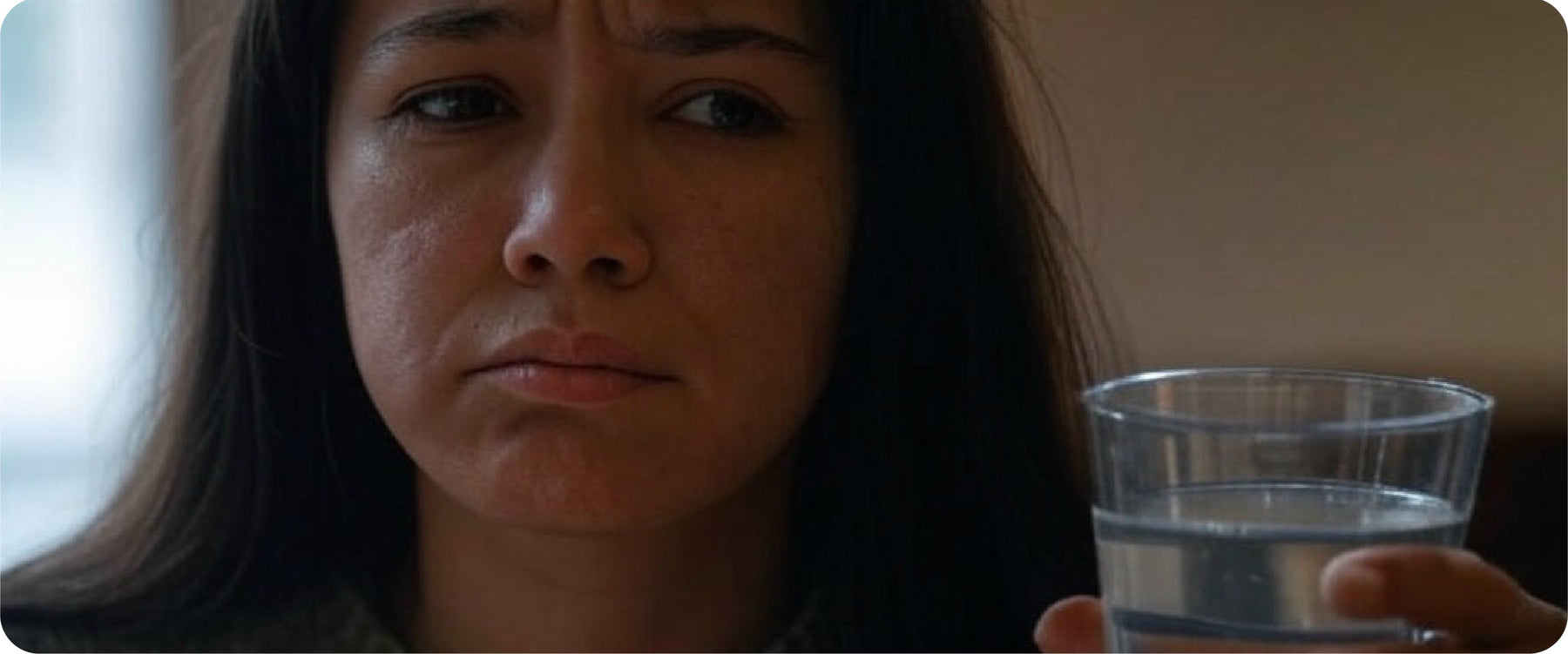use code: 5%OFF
use code: 5%OFF

If you’ve installed a filter but your drinking water still smells off or tastes strange—you're not alone.
Maybe it’s got a metallic, chlorine-like, or even musty taste. Some people even say it tastes like plastic.
Let’s break down why that happens and what you can do to fix it—because clean water should taste clean, too.
Not all filters are created equal. Many basic filters only reduce chlorine and large sediment. But water contains a lot more than that.
Here’s what might still be in your water:
Chloramine – A chemical disinfectant used instead of chlorine in many cities. It’s harder to remove and causes a strong chemical taste.
➡️ CDC on Chloramines
Volatile Organic Compounds (VOCs) – These come from industrial waste or agricultural runoff. Some have strong smells, like plastic or fuel.
➡️ EPA on VOCs in Drinking Water
Metallic tastes from iron, copper or zinc – Often caused by old plumbing, especially in high-rise apartments or older homes.
➡️ WHO – Guidelines for Drinking Water Quality
If your filter doesn’t specifically target these contaminants, they might still be in your glass.
When was the last time you changed your filter?
Clogged filters can start releasing trapped bacteria and residue back into the water.
Expired cartridges lose their effectiveness, letting unpleasant tastes or smells come through.
Even worse—bacteria can grow inside filters if they’re not maintained properly. This can create a musty or swampy taste.
📅 Tip: Most filters need changing every 3–6 months, depending on your water source and usage. Always follow your brand’s recommended schedule.
Even with a good filter, taste issues can come from the system itself—especially if the unit isn’t cleaned regularly.
Common taste-causing sources include:
Slime-like biofilm inside the filter housing or faucet head
Mold in water jugs or fridge dispensers
Mineral buildup in internal plumbing
Cleaning only the outside of your dispenser isn’t enough. The inside matters most.
A filter can only do so much if the source water quality is poor.
High Total Dissolved Solids (TDS) like sodium, nitrate, or sulfate can give water a salty or bitter aftertaste—even after filtration.
Contaminated groundwater or nearby construction can change the water composition over time.
Even a top-notch filter might not fix a deeply contaminated water source without multi-stage filtration or reverse osmosis.
To truly get great-tasting, clean water, you need to:
Activated carbon filters → Good for chlorine, odors, VOCs
KDF & ceramic filters → Better for heavy metals and bacteria
Reverse osmosis → Best for total taste neutrality (removes almost everything)
Replace cartridges as recommended
Clean inside and outside components
Flush the system before use after long inactivity
Not all filters are independently tested. Look for ones certified by NSF, WQA, or tested for specific contaminants.
At ShopNSave, we:
Offer a wide range of filters for different water problems
Carry certified brands trusted in Malaysia
Help you choose based on your local water quality and housing type
Make it easy to stock up on authentic replacement cartridges
Filtered water should be crisp, clean, and tasteless—or at least refreshing.
If your water still tastes off after filtering, don’t just ignore it.
It might be a sign that:
You need a different filter type
Your system needs cleaning
Or your water needs more advanced treatment